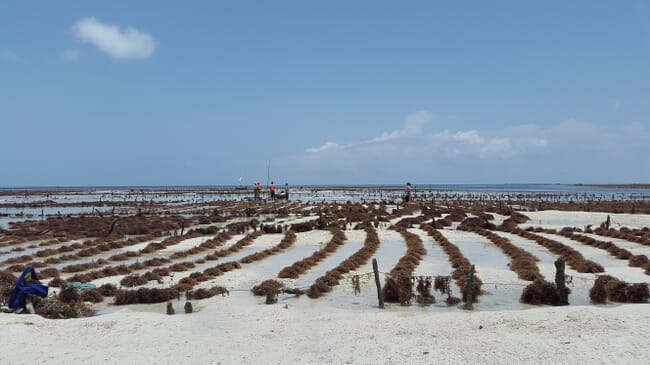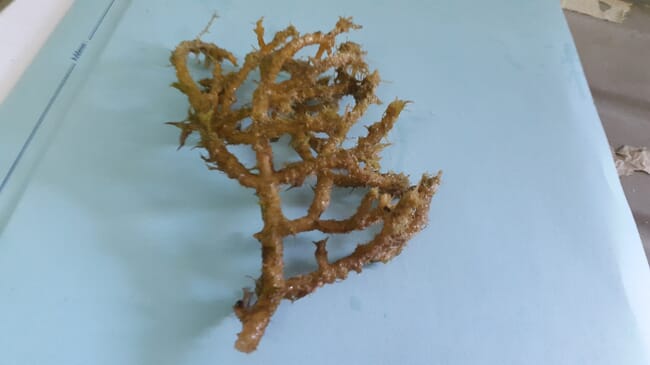The UK-funded GlobalSeaweed initiative involves scientists from seven international research institutes and aims to provide solutions and training in disease prevention. The seaweed industry is the fastest-growing of all aquaculture sectors, transforming the lives of millions of people, but the increasing threat from disease and pests has prompted a global research group into action to protect this multi-billion dollar commodity.
The industry worldwide is worth more than $5billion annually, growing by around 10 per cent each year, and supports millions of families in coastal communities, especially in developing nations, where 95 per cent of the world’s seaweed supply is cultivated. Seaweed is grown to be eaten and to produce substances such as agar, which has many applications, from cooking to microbiology.

But outbreaks of seaweed disease and pest infestations are having catastrophic socio-economic impacts on the communities reliant on seaweed production. In the Philippines alone, losses over $100 million per year were attributed to disease, representing 15 per cent of their farmed seaweed production, and similar reductions have been seen in Tanzania and Indonesia.
Dr Elizabeth Cottier-Cook of the Scottish Association for Marine Science (SAMS) leads the project, which is part of the £225m Global Challenges Research Fund (GCRF). She said: “Worldwide, seaweed farming provides income to millions of families in rural coastal communities and provides a source of food. The industry has also enabled women to become economically active in areas where few opportunities exist.
“But, many seaweeds grown in developing countries are intentionally introduced from other parts of the world and they can bring with them a whole host of pests and disease, which go on to have wider environmental consequences.
“We want to train people from seaweed-producing developing nations in how to identify disease, support their efforts in breeding better crops and help shape national and international legislations to improve biosecurity. In turn, we hope that the exchange of information and sharing of best practices on breeding and cultivation techniques will benefit a truly global industry.”

The key ecological and socio-economic challenges hindering the sustainable economic growth of the seaweed industry were recently identified in a SAMS / United Nations University Institute for Water, Environment and Health (UNU INWEH) Policy Brief led by Dr Cottier-Cook. Two main challenges highlighted were the high vulnerability of some crops to disease outbreaks and pest infestation and the paucity of biosecurity measures and legislation governing the movement of seaweeds between regions and continents.
Dr Grant Stentiford of the UK’s Centre for Environment, Fisheries, Aquaculture Sciences (Cefas), said: “GlobalSeaweed comes at a crucial time in the expansion of the global seaweed aquaculture industry. Whilst recognising the clear benefits that seaweed cultivation may play in food security and poverty alleviation, we must also be minded of the hurdles faced during expansion of other aquaculture sectors, particularly related to the damaging effects of emerging disease.
“These diseases have been particularly devastating when spread by global trading. The unique scientific team assembled under GlobalSeaweed will link industry operatives, policy professionals and scientists to develop best practice in this growing industry and, to provide underpinning evidence to facilitate development of new policies around trading of seaweed based upon disease.”
Dr Ruth Garcia Gomez, an aquatic biosecurity specialist with Pacific Community, said: “Seaweed farming is one of the few industries in Pacific Island Countries and Territories (PICTs) that are potentially export-oriented, culturally and technologically appropriate, and able to provide substantial livelihood benefits to men and women in remote communities.
“Seaweed is ranked one of the highest priority commodities for aquaculture by many PICTs, such as Fiji, Kiribati, Papua New Guinea, Samoa, Solomon Islands and Tonga, among others.”
Malcolm Beveridge, Head of the Aquaculture branch at the United Nations’ (UN) Food and Agriculture Organisation (FAO), said: “It is fantastic to see seaweed, a much neglected marine resource, being given serious attention as a sustainable means of helping lift people out of poverty and hunger.”
Internationally the project will deliver a digital Atlas of Seaweed Diseases and Pests, and a rapid response network to deal with seaweed crises as soon as they emerge. It will also establish the GCRF GlobalSeaweed Fund, which will financially support seaweed-related projects in developing nations and in the UK.

